

Pierre-Joseph Witdoeck, also known as Petrus Josephus Witdoeck (4 January 1803, Antwerp - 16 October 1889, Tournai) was a Belgian painter and architect. Some sources give his year of death as 1840 or 1873.


Pierre-Joseph Witdoeck, also known as Petrus Josephus Witdoeck (4 January 1803, Antwerp - 16 October 1889, Tournai) was a Belgian painter and architect. Some sources give his year of death as 1840 or 1873.
He was the son of Franciscus Donatus Witdoeck (1766-1834), a painter and professor of architecture at the Royal Academy, who gave him his first lessons. Later, he studied with Ferdinand de Braekeleer and Mathieu-Ignace Van Brée. One of his ancestors, Hans Witdoeck, was a student of Peter Paul Rubens.
In 1824, he accompanied Colonel Bernard Rottiers on a scientific expedition sponsored by King William I of the Netherlands. They visited Algeria, Greece, Egypt and India; returning in 1827 through Italy. He brought back numerous sketches of architecture and antiquities, notably from the island of Rhodes. They were published by Colonel Rottiers in 1830.
After that, he taught architecture, painting and design at the Jesuit college in Brugelette, in the province of Hainaut. This was followed by an appointment as the City Architect of Turnhout, where he also founded and directed a design academy.
He married Marie-Antoinette van Haesendonck and they had twelve children; several of whom became painters, but of no particular note. His daughter, Marie-Thérèse, married Colonel Léon Braconnier , a colonial administrator.
He was especially interested in religious and historical subjects. Many of his works are devoted to the history of the Spanish Netherlands.
A large collection of his works may be seen at the Broel Museum in Courtrai. The Église Sainte-Catherine de Lille contains a notable representation of the Last Supper, dating from 1843, which is integrated into the altar.
![]() Media related to Pierre-Joseph Witdoeck at Wikimedia Commons
Media related to Pierre-Joseph Witdoeck at Wikimedia Commons

The Prix de Rome or Grand Prix de Rome was a French scholarship for arts students, initially for painters and sculptors, that was established in 1663 during the reign of Louis XIV of France. Winners were awarded a bursary that allowed them to stay in Rome for three to five years at the expense of the state. The prize was extended to architecture in 1720, music in 1803, and engraving in 1804. The prestigious award was abolished in 1968 by André Malraux, the Minister of Culture, following the May 68 riots.

De Stijl, Dutch for "The Style", also known as Neoplasticism, was a Dutch art movement founded in 1917 in Leiden. De Stijl consisted of artists and architects. In a narrower sense, the term De Stijl is used to refer to a body of work from 1917 to 1931 founded in the Netherlands. Proponents of De Stijl advocated pure abstraction and universality by a reduction to the essentials of form and colour; they simplified visual compositions to vertical and horizontal, using only black, white and primary colors.
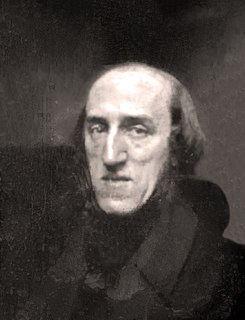
Joseph Antoine Ferdinand Plateau was a Belgian physicist and mathematician. He was one of the first people to demonstrate the illusion of a moving image. To do this, he used counterrotating disks with repeating drawn images in small increments of motion on one and regularly spaced slits in the other. He called this device of 1832 the phenakistiscope.

Henry Clemens van de Velde was a Belgian painter, architect, interior designer, and art theorist. Together with Victor Horta and Paul Hankar, he is considered one of the founders of Art Nouveau in Belgium. He worked in Paris with Samuel Bing, the founder of the first gallery of Art Nouveau in Paris. Van de Velde spent the most important part of his career in Germany and became a major figure in the German Jugendstil. He had a decisive influence on German architecture and design at the beginning of the 20th century.

Petrus Josephus Hubertus "Pierre" Cuypers was a Dutch architect. His name is most frequently associated with the Amsterdam Central Station (1881–1889) and the Rijksmuseum (1876–1885), both in Amsterdam. More representative for his oeuvre, however, are numerous churches, of which he designed more than 100. Moreover, he restored many monuments.
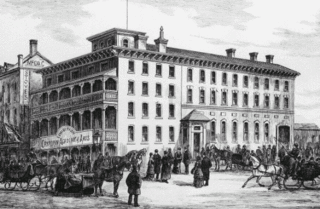
The Royal Canadian Academy of Arts (RCA) is a Canadian arts-related organization that was founded in 1880.
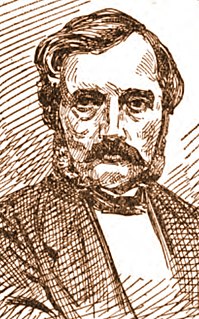
Guillaume Geefs, also Willem Geefs, was a Belgian sculptor. Although known primarily for his monumental works and public portraits of statesmen and nationalist figures, he also explored mythological subject matter, often with an erotic theme.

Charles de Wailly was a French architect and urbanist, and furniture designer, one of the principals in the Neoclassical revival of the Antique. His major work was the Théâtre de l'Odéon for the Comédie-Française (1779–82). In his designs, de Wailly showed a predilection for the perfect figure, the circle.

The Royal Museums of Fine Arts of Belgium are a group of art museums in Brussels, Belgium.
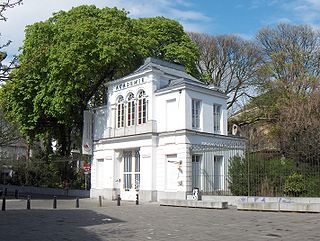
The Royal Academy of Fine Arts Antwerp is an art academy located in Antwerp, Belgium. It is one of the oldest of its kind in Europe. It was founded in 1663 by David Teniers the Younger, painter to the Archduke Leopold Wilhelm and Don Juan of Austria. Teniers was master of the Guild of St Luke — which embraced arts and some handicrafts — and petitioned Philip IV of Spain, then master of the Spanish Netherlands, to grant a royal charter to establish a Fine Arts Academy in Antwerp. It houses the Antwerp Fashion Academy.
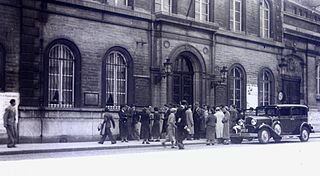
The Académie Royale des Beaux-Arts - École supérieure des Arts de la Ville de Bruxelles (ARBA-ESA), in Dutch Koninklijke Academie voor Schone Kunsten van Brussel, is the Belgian art school, established in Brussels in the Kingdom of Belgium. It was founded in 1711. At the beginning housed in a single room in the city hall, in 1876 the school moved to a former convent and orphanage in the Rue du Midi, rehabilitated by the architect Pierre-Victor Jamaer, where the school still operates.

Jean-Pierre-Antoine Tassaert or Jean Pierre Antoine Tassaert was a sculptor of Flemish extraction, who, after a successful career in France, became a leading portrait sculptor in Berlin.

An École des Beaux-Arts is one of a number of influential art schools in France. It is the cradle of Beaux-Arts style in architecture and city planning that thrived in France and the United States during the end of the nineteenth century and the first quarter of the twentieth century. The most famous and oldest École des Beaux-Arts is the École nationale supérieure des Beaux-Arts, now located on the left bank in Paris, across the Seine from the Louvre, at 14 rue Bonaparte. The school has a history spanning more than 350 years, training many of the great artists in Europe. Beaux Arts style was modeled on classical "antiquities", preserving these idealized forms and passing the style on to future generations.
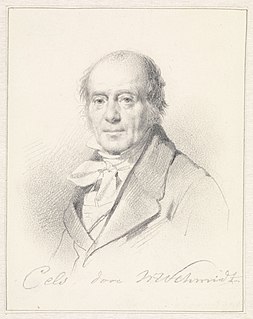
Cornelis Cels was a Flemish painter of portraits and religious subjects. He was a professor and director of the Académie des Beaux-Arts de Tournai. He was patronized as a portrait painter by the court of The Hague.

Willem Jacob Herreyns was a Flemish painter of history subjects and portraits. He is regarded as one of the last painters in the tradition of the Flemish Baroque and the last follower of Peter Paul Rubens.

Neoclassical architecture appeared in Belgium during the period of Austrian occupation in the mid-18th century and enjoyed considerable longevity in the country, surviving through periods of French and Dutch occupation, and the birth of Independent Belgium, surviving well into the 20th century.
Peter Henricus Theodorus (Pierre) Tetar Elven was a Dutch painter and draftsman of the 19th century, with a preference for architecture, landscapes, and Italian cityscapes (vedutas). He also painted a few genre pieces for French high society.

Neoclassicism is a movement in architecture, design and the arts which was dominant in France between about 1760 to 1830. It emerged as a reaction to the frivolity and excessive ornament of the baroque and rococo styles. In architecture it featured sobriety, straight lines, and forms, such as the pediment and colonnade, based on Ancient Greek and Roman models. In painting it featured heroism and sacrifice in the time of the ancient Romans and Greeks. It began late in the reign of Louis XV, became dominant under Louis XVI, and continued through the French Revolution, the French Directory, and the reign of Napoleon Bonaparte, and the Bourbon Restoration until 1830, when it was gradually replaced as the dominant style by romanticism and eclecticism.

Petrus Norbertus van Reysschoot or Pieter Norbert van Reysschoot was a Flemish painter, draughtsman, decorator, educator and art collector. He spent his career in Ghent. He is known for his decorative projects in local residences and churches and in particular his grisaille paintings. His subject matter ranged from landscapes, allegories, mythological and religious stories, genre scenes and trompe-l'œil still lifes.

The Leyniers family (/lɛnɪjɛ/) is a bourgeois family that appeared in Brussels in the 15th century and produced many high-level tapestry makers and dyers, experts in the art of dyeing in subtle shades the woolen threads destined for this trade.